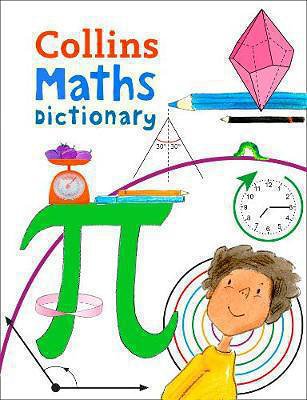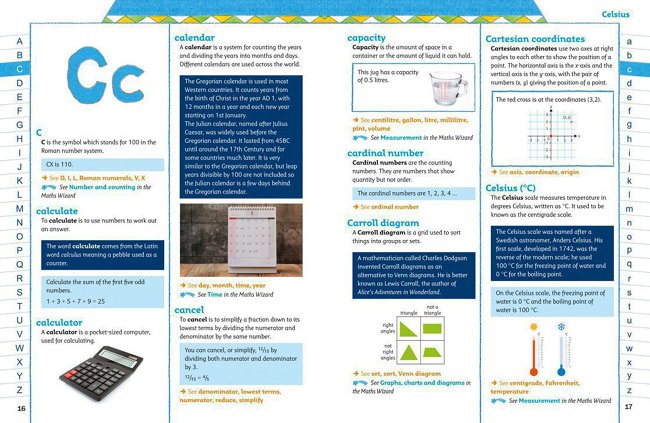I have just had my third dictionary published by Collins, which I'm delighted about. My original Letts dictionary from 20 years ago was great, but understandably looking a little out of date now. When I set about updating and re-writing it for Collins (who own Letts) I was amazed by the number of new maths words that are now relevant to primary children. Many have crept down from secondary school mathematics with higher expectations now, and some have come in through the emphasis on a mastery approach and accuracy of specific terms. For example, subtrahend, minuend and multiplicand are in much more common use in primary classrooms than 20 years ago.
My latest dictionary also includes a 'Maths Wizard' of facts and figures at the back of the book to help children and teachers dig deeper into the maths. I've always enjoyed exploring dictionaries (not just maths ones) and shared that passion for words with the children in my class.
So encourage your class to use a dictionary themselves, and the best way is to show them that you use one yourself.
A key part of representing mathematical ideas, concepts or procedures so that it makes sense for children is about getting the language right. As teachers we each have (hopefully similar) ideas of what we mean by, say, 'product', 'divide' or 'angle' but it is not always easy to explain these to children. Using models, pictures and diagrams helps immensely, but so does accurate mathematical language. I have always had a maths dictionary at hand to help so I would suggest making use of one yourself.
You can read a little more about The Collins Maths Dictionary and order it from Amazon or Waterstones.
Website design by SiteBuilder Bespoke




